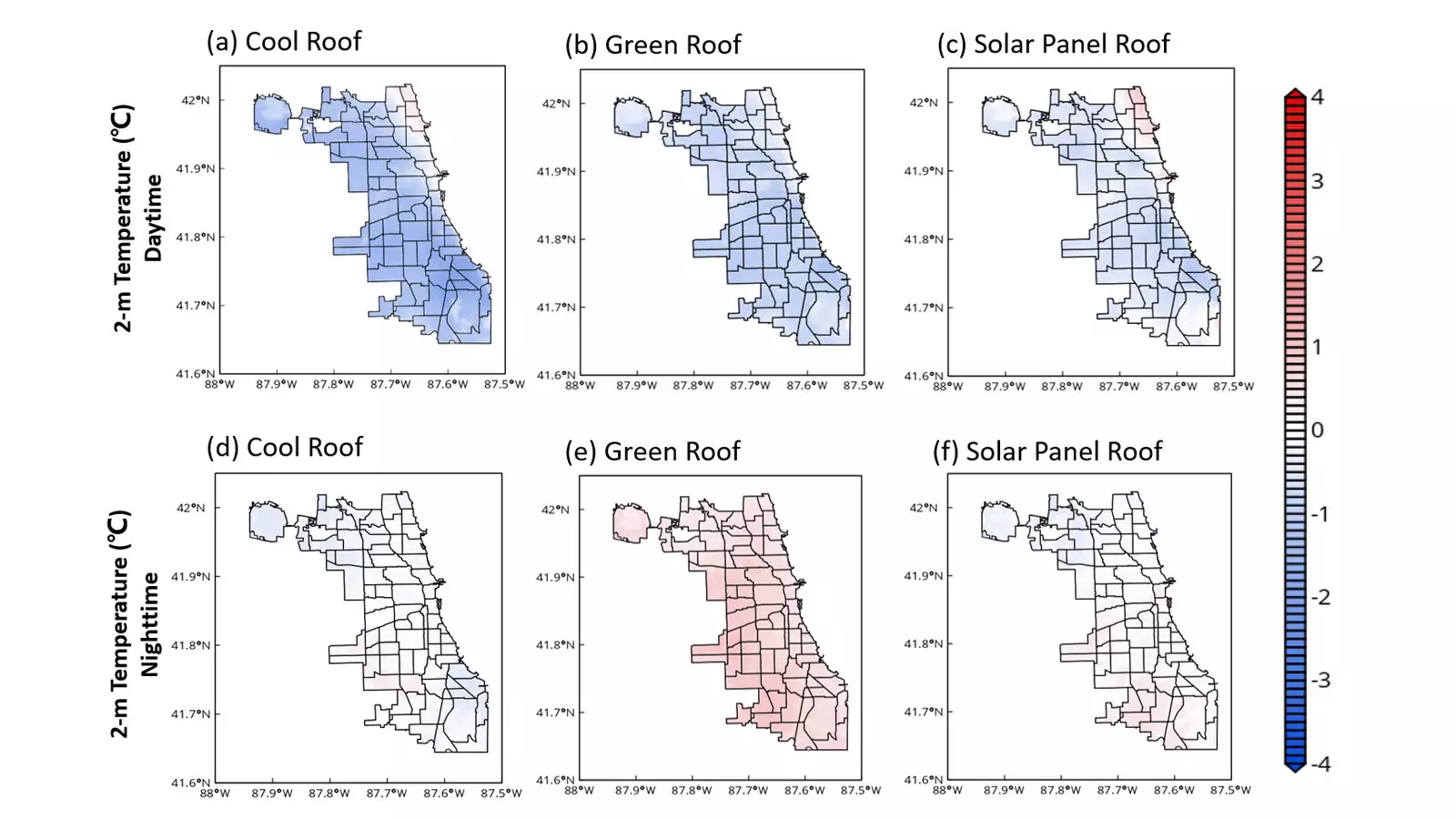Concrete sidewalks, black asphalt streets, traffic, and steel buildings are common elements in urban environments. However, these elements contribute to the urban heat island effect, which leads to higher temperatures in cities. With the increasing global temperatures, it is crucial to find strategies to keep urban residents cool. One such strategy involves utilizing roofs as a means to cool the surrounding air and reduce the need for air conditioning. Researchers at the U.S. Department of Energy’s Argonne National Laboratory have conducted a study to examine the impact of three roofing strategies on near-surface temperature and cooling energy demand in the Chicago metropolitan area.
The study investigated three different types of roofs: cool roofs (painted in a heat-reflecting white), green roofs (with vegetation), and solar panel roofs. Each of these roofing strategies was simulated using a regional climate model in the Chicago metro area. The goal was to determine their effectiveness in reducing near-surface temperature and decreasing AC consumption during the hottest daytime hours.
The research revealed that all three types of roofs led to a reduction in near-surface temperature and AC consumption. Cool roofs had the most significant cooling effect, reducing the temperature by 1.5 degrees Celsius, followed by green roofs (1.2 degrees) and solar panel roofs (0.6 degrees) across the Chicago area. In terms of energy demand, cool roofs reduced AC consumption by 16.6%, green roofs by 14.0%, and solar panel roofs by 7.6%. Therefore, cool roofs showed the best potential for cooling effects and energy savings.
Cool roofs were found to be the most cost-effective option as they were less expensive than green roofs and solar panel roofs. Additionally, cool roofs do not require additional water, unlike green roofs. However, green roofs have the added benefit of managing stormwater loads. Stakeholders can use these findings to inform sustainable development approaches and lower summertime cooling energy demand, ultimately reducing greenhouse gas emissions in the long term.
This study was conducted as part of the CROCUS Urban Integrated Field Laboratory led by Argonne. CROCUS focuses on studying urban climate change and its implications for environmental justice in the Chicago region. The results of this study serve as a baseline for planning and testing mitigation options in CROCUS communities.
The researchers aim to develop city-scale and global-scale models for each of the roofing options. They plan to incorporate more data on green roofs by measuring energy inputs, outputs, water needs, and retention rates. This will allow for a more accurate representation and calculation of the cooling effects of green roofs. Additionally, the team intends to improve the resolution of the model to street level, enabling a better understanding of the impact of trees and other factors on cooling nearby buildings and pavement.
The research utilized supercomputing resources at the Argonne Leadership Computing Facility and the National Energy Research Scientific Computing Center. These facilities provided the computational power needed to run the regional climate model and evaluate the impact of different roofing strategies.
The study’s findings highlight the potential of cool roofs, green roofs, and solar panel roofs in mitigating the urban heat island effect and reducing energy consumption. Cool roofs emerged as the most cost-effective option, while green roofs offered additional benefits in managing stormwater. The research lays the groundwork for further studies and modeling, ultimately aiding decision-makers in implementing effective strategies to combat the challenges posed by urban heat islands.


Leave a Reply